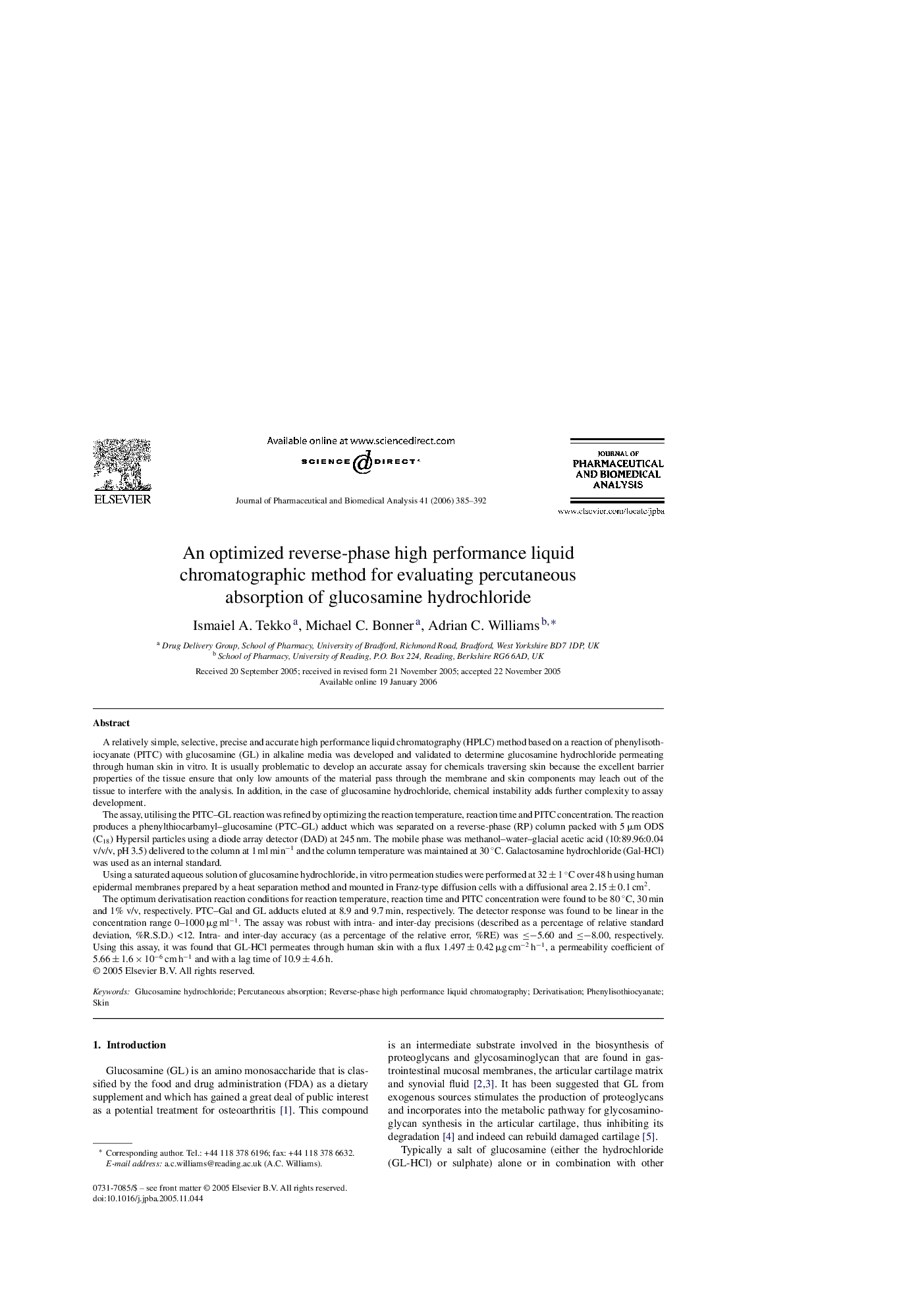| Article ID | Journal | Published Year | Pages | File Type |
|---|---|---|---|---|
| 1224997 | Journal of Pharmaceutical and Biomedical Analysis | 2006 | 8 Pages |
A relatively simple, selective, precise and accurate high performance liquid chromatography (HPLC) method based on a reaction of phenylisothiocyanate (PITC) with glucosamine (GL) in alkaline media was developed and validated to determine glucosamine hydrochloride permeating through human skin in vitro. It is usually problematic to develop an accurate assay for chemicals traversing skin because the excellent barrier properties of the tissue ensure that only low amounts of the material pass through the membrane and skin components may leach out of the tissue to interfere with the analysis. In addition, in the case of glucosamine hydrochloride, chemical instability adds further complexity to assay development.The assay, utilising the PITC–GL reaction was refined by optimizing the reaction temperature, reaction time and PITC concentration. The reaction produces a phenylthiocarbamyl–glucosamine (PTC–GL) adduct which was separated on a reverse-phase (RP) column packed with 5 μm ODS (C18) Hypersil particles using a diode array detector (DAD) at 245 nm. The mobile phase was methanol–water–glacial acetic acid (10:89.96:0.04 v/v/v, pH 3.5) delivered to the column at 1 ml min−1 and the column temperature was maintained at 30 °C. Galactosamine hydrochloride (Gal-HCl) was used as an internal standard.Using a saturated aqueous solution of glucosamine hydrochloride, in vitro permeation studies were performed at 32 ± 1 °C over 48 h using human epidermal membranes prepared by a heat separation method and mounted in Franz-type diffusion cells with a diffusional area 2.15 ± 0.1 cm2.The optimum derivatisation reaction conditions for reaction temperature, reaction time and PITC concentration were found to be 80 °C, 30 min and 1% v/v, respectively. PTC–Gal and GL adducts eluted at 8.9 and 9.7 min, respectively. The detector response was found to be linear in the concentration range 0–1000 μg ml−1. The assay was robust with intra- and inter-day precisions (described as a percentage of relative standard deviation, %R.S.D.) <12. Intra- and inter-day accuracy (as a percentage of the relative error, %RE) was ≤−5.60 and ≤−8.00, respectively. Using this assay, it was found that GL-HCl permeates through human skin with a flux 1.497 ± 0.42 μg cm−2 h−1, a permeability coefficient of 5.66 ± 1.6 × 10−6 cm h−1 and with a lag time of 10.9 ± 4.6 h.
